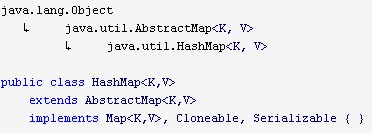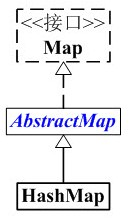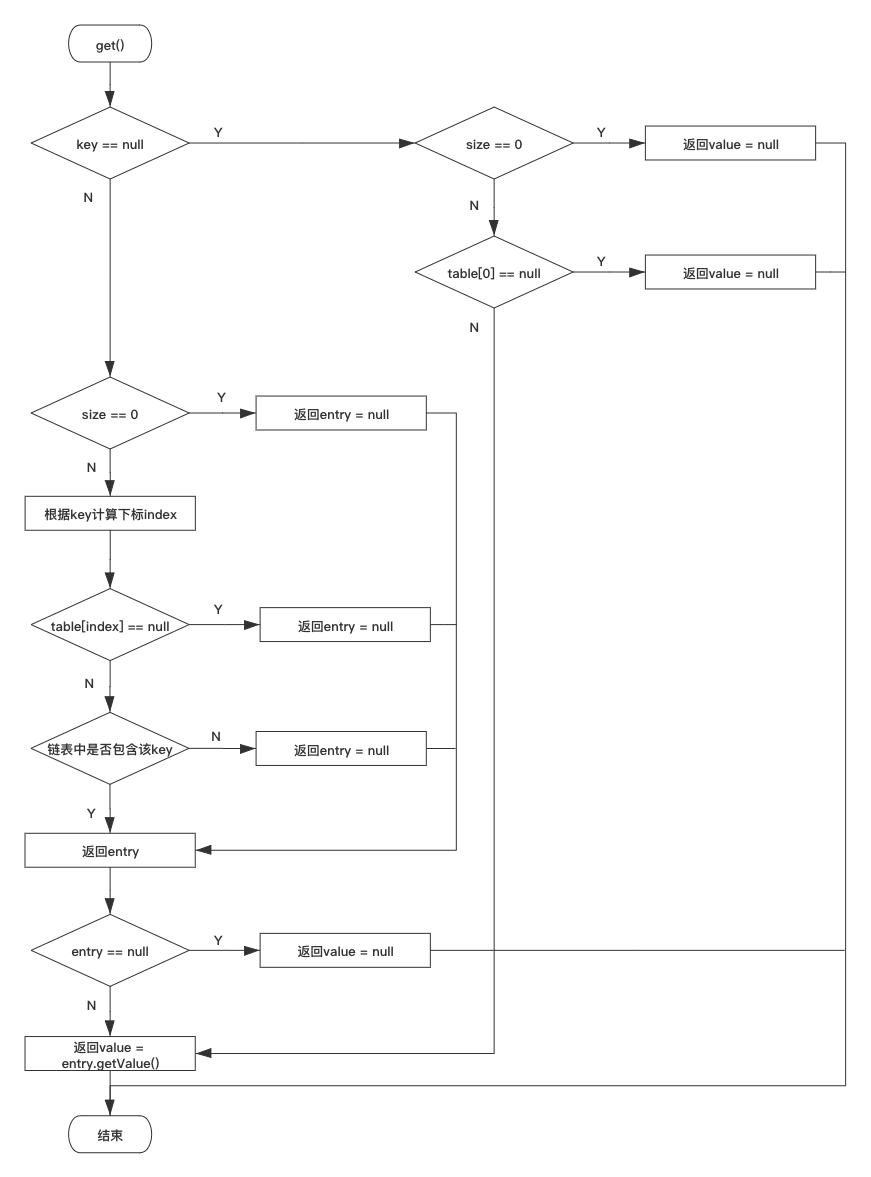After explaining the underlying principles of hashmap to the interviewer, he said he was optimistic about me
Jun 01, 2021 Article blog
Table of contents
1. First, HashMap introduction
2. Second, the underlying principle of HashMap in JDK7
As a programmer, you must have been asked about
HashMap
during the interview, and the basic implementation principle is that every interviewer should master it, when we master the internal implementation principles of
HashMap
In the face of the interviewer's inquiry, you can answer freely, and the next editor will take you to understand the
JDK7
version of
HashMap
foundation and how to implement it.
First, HashMap introduction
Introduction to HashMap:
HashMap
is a hashmap that stores key-value pair mapping.
HashMap
is inherited from
AbstractMap
and implements
Map
Cloneable
java.io.Serializable
interfaces.
HashMap
implementation is not synchronous, which means it is not thread-safe. I
ts
key
value
can be
null
I
n addition, the mapping in
HashMap
is not ordered. A
n instance of
HashMap
has two parameters that affect its performance: "initial capacity" and "load factor." C
apacity is the number of buckets in the hash table, and the initial capacity is just the capacity of the hash table at the time it was created. T
he load factor is a measure of how full a hash table can reach before its capacity increases automatically. W
hen the number of entries in the hash table exceeds the product of the load factor to the current capacity, the hash table is
rehash
(that is, the internal data structure is rebuilt), so that the hash table will have about twice the number of barrels. T
ypically, the default load factor is 0.75, which is a trade-off in time and space costs. T
oo high a load factor reduces space overhead, but it also increases query costs (as reflected in most
HashMap
operations, including
get
and
put
operations). W
hen setting the initial capacity, you should take into account the number of entries required in the map and its loading factors in order to minimize the number of
rehash
operations.
If the initial capacity is greater than the maximum number of entries divided by the load factor, the
rehash
operation does not occur.
The inheritance relationship of HashMap :

HashMap's relationship with Map is illustrated below:

HashMap's constructor
HashMap has four constructors, as follows:
// 默认构造函数。
HashMap()
// 指定“容量大小”的构造函数
HashMap(int capacity)
// 指定“容量大小”和“加载因子”的构造函数
HashMap(int capacity, float loadFactor)
// 包含“子Map”的构造函数
HashMap(Map<? extends K, ? extends V> map)
Second, the underlying principle of HashMap in JDK7
The basic storage structure used by
HashMap
in
JDK7
or
JDK8
is in the form
of arrays and linked lists.
This section focuses on the underlying implementation of
HashMap
in
JDK7
and its basic structure is shown below:

The orange area on the left in the image above is the hash table, the blue area on the right is the list, and the element type in the list is
Entry
which contains four properties:
- K key
- V value
- int hash
- Entry next
So why is there a storage structure in the form of
arrays and lists?
H
ere's a brief introduction, followed by a detailed description in the form of a source code. W
hen we store data using
HashMap.put("Key", "Value")
method, the underlying is actually storing
key
and
value
as
Entry
in the hash table, which is an array, so how does it store an
Entry
object in an array? H
ow do you determine where the
Entry
of the current
key
and
value
consists of the array, in other words, how do you determine the index of the
Entry
object in the array? T
ypically, when we determine an array, we store the data one by one in the array until the array is full, and then consider the expansion of the array, which is not the case with
HashMap
In
Java
and most object-oriented programming languages, each object has an integer variable
hashcode
which is an important identity that identifies different objects, and with this
hashcode
it is easy to determine the subscript index of
Entry
objects, in
Java
language, it is understood that
hashcode
is converted into an array subscript based on array length mold operation, the basic formula is as follows:
hashcode
int index = HashCode(key) % Array.length
In fact, in
JDK
the hash function does not take the die operation directly, but uses the bit operation to improve performance, which we understand here as a simple die-taking operation. W
e know that by hashing
Key
and then molding the array length to get the current
Entry
object's subscript in the array, we can keep calling
HashMap
put
method to continuously store data into the array. B
But there is a phenomenon that the results calculated from different
Key
are likely to be identical, a phenomenon known as
hash conflict.
N
ow that there is a hash conflict, how does this data that conflicts store? H
ash conflict is actually an unavoidable fact, since it can not be avoided, then we should find a way to solve this problem, the current commonly used methods are mainly two, one is open addressing method, the other is the linked list method. O
pen addressing is a simple principle, that is, in the array "to find another high", trying to find the next neutral position. I
nstead of looking for the next neutral location, the list law continues to be stored in the current conflict, forming a list of existing data and storing it as a list.
HashMap
is stored in the form
of an array-linked list,
which is used to resolve hash conflicts. F
or specific details, please continue to look down.
In daily development, developers use
HashMap
most of its construction methods,
put
methods, and
get
methods, and let's start with a detailed understanding of
HashMap
works.
Third, HashMap put, get method flowchart
Here is a flowchart of
HashMap
put
method to store data for the reader's reference:

Here is a flowchart of
HashMap
get
method to get data for readers to refer to:

The
get
flowchart above is slightly more complex than normal, just to describe the process more clearly.
Fourth, the common HashMap iterative approach
During the actual development process, we also have a common operation for
HashMap
iterative traversal,
HashMap
is commonly used in several ways:
- Mode 1: Iterator mode
Map<String, String> map = new HashMap<>(16);
Iterator<Map.Entry<String, String>> iterator = map.entrySet().iterator();
while (iterator.hasNext()) {
Map.Entry<String, String> next = iterator.next();
System.out.println(next.getKey() + ":" + next.getValue());
}
- Mode 2: Traverse set > way
Map<String, String> map = new HashMap<>(16);
for (Map.Entry<String, String> entry : map.entrySet()) {
System.out.println(entry.getKey() + ":" + entry.getValue());
}
- Mode 3: ForEach Method (JDK8 Features, Lambda)
Map<String, String> map = new HashMap<>(16);
map.forEach((key, value) -> System.out.println(key + ":" + value));
- Mode 4: KeySet mode
Map<String, String> map = new HashMap<>(16);
Iterator<String> keyIterator = map.keySet().iterator();
while (keyIterator.hasNext()) {
String key = keyIterator.next();
System.out.println(key + ":" + map.get(key));
}(Recommended micro-class: Java micro-class)
Comparing these four methods, the first three are actually the same, are iterator traversal, if you want to use
key
and
value
recommend the first three methods, if only to
key
then recommend the use of the fourth.
Source: www.toutiao.com/a6862688709423137294/
The above is
W3Cschool编程狮
about
hashmap underlying principles
of the relevant introduction, I hope to help you.